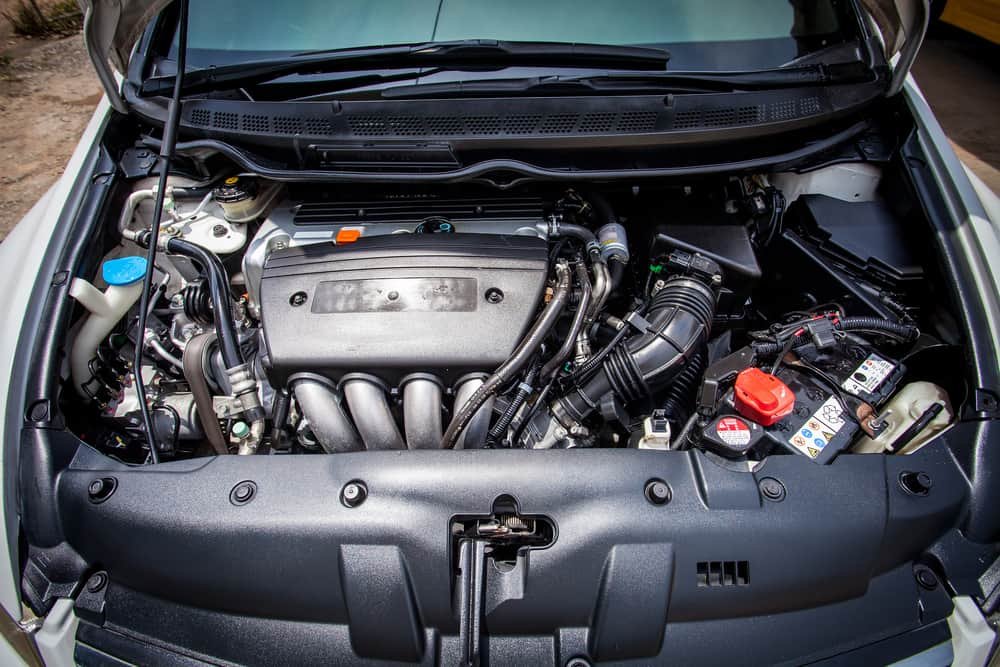Car engines power our vehicles and keep us moving. Although they seem complex, understanding the basics can make car maintenance easier. Whether you’re a car enthusiast or just curious, knowing how engines work helps you appreciate their design and function. In this article, we’ll explore the basics of car engines, including their main components and how they generate power.
How Car Engines Work
Car engines work by converting fuel into mechanical energy. This process involves a series of controlled explosions inside the engine’s cylinders. The explosions push pistons, which move up and down. This movement turns the crankshaft, which ultimately powers the car’s wheels. In simple terms, the engine burns fuel, creates power, and drives the vehicle.
The Four-Stroke Cycle
Most car engines use a four-stroke cycle to generate power. These four strokes include intake, compression, power, and exhaust.
- Intake Stroke: The intake valve opens, and the piston moves down. This action draws in a mixture of air and fuel.
- Compression Stroke: The intake valve closes, and the piston moves up. It compresses the air-fuel mixture, making it more explosive.
- Power Stroke: The spark plug ignites the compressed mixture. The resulting explosion pushes the piston down, generating power.
- Exhaust Stroke: The exhaust valve opens, and the piston moves up again. It expels the burnt gases from the cylinder.
This cycle repeats rapidly, powering the car. Understanding these four strokes is key to grasping how car engines operate.
Main Components of a Car Engine
Several key components work together to make a car engine function. Let’s take a look at the most important ones.
- Cylinders: These are the chambers where fuel combustion happens. Engines can have four, six, eight, or more cylinders.
- Pistons: Pistons move up and down inside the cylinders, driven by the explosions of the air-fuel mixture.
- Crankshaft: The crankshaft converts the pistons’ up-and-down motion into rotational motion, which turns the wheels.
- Camshaft: The camshaft controls the opening and closing of the engine’s valves, timing them with the pistons’ movement.
- Spark Plugs: Spark plugs ignite the air-fuel mixture in the cylinders, creating the explosion that drives the pistons.
- Valves: Valves control the flow of air, fuel, and exhaust gases into and out of the cylinders.
- Timing Belt/Chain: This component synchronizes the movement of the crankshaft and camshaft, ensuring proper engine timing.
Each component plays a critical role in the engine’s operation. Together, they ensure the engine runs smoothly and efficiently.
Types of Car Engines
Car engines come in various types, each with its advantages. The most common types include:
- Inline Engines: Cylinders are arranged in a straight line. These engines are compact and efficient, often found in smaller cars.
- V Engines: Cylinders are arranged in a V shape. V engines are powerful and commonly used in performance and luxury vehicles.
- Boxer Engines: Cylinders lie flat, facing outward in opposite directions. These engines offer a lower center of gravity, improving stability.
- Rotary Engines: Unlike piston engines, rotary engines use rotors to generate power. They are compact and offer high power for their size.
Choosing the right engine type depends on the vehicle’s design and performance needs.
Maintaining Your Car Engine
Proper maintenance keeps your car engine running smoothly. Regular oil changes, for example, lubricate engine parts and reduce wear. Checking and replacing the air filter ensures the engine breathes clean air. Monitoring coolant levels helps prevent overheating, which can damage the engine. Regular tune-ups and inspections can catch minor issues before they become major problems.
By understanding the basics of car engines, you can take better care of your vehicle. Simple maintenance tasks and a basic knowledge of engine components go a long way in ensuring your car runs efficiently.
Driving Passion for Cars and Entertainment
Mopar Search keeps car enthusiasts updated with the latest news and trends in the automotive world. Alongside automotive insights, visitors can explore the jokacasino Portal for exciting online gaming experiences. This combination of automotive content and leisure offers a unique way to engage with the site. Stay informed and entertained with every visit.
Final Thoughts
Car engines are marvels of engineering, turning fuel into the power that moves us forward. By learning the basics, you gain a deeper appreciation of how these machines work. Whether you’re behind the wheel or under the hood, understanding car engines enhances your driving experience. Keep learning, stay curious, and enjoy the journey on the road ahead.
Power, Performance, and Playtime
At Mopar Search, enthusiasts fuel their passion for muscle cars and performance parts with dedication and precision. After tuning engines and hunting for the perfect upgrade, it’s important to take a break and enjoy some downtime. Many fans turn to stellarspins for an exciting and secure way to unwind online. It’s the perfect balance between high-octane passion and fun relaxation.
Take a Break with the Best Online Casino Bonus Offers in Australia
After handling the complexities of car repairs, it’s important to relax and enjoy some entertainment. For those interested in online gaming, explore the best online casino bonus offers in australia to experience exciting games combined with rewarding bonuses, offering a great way to unwind responsibly.

